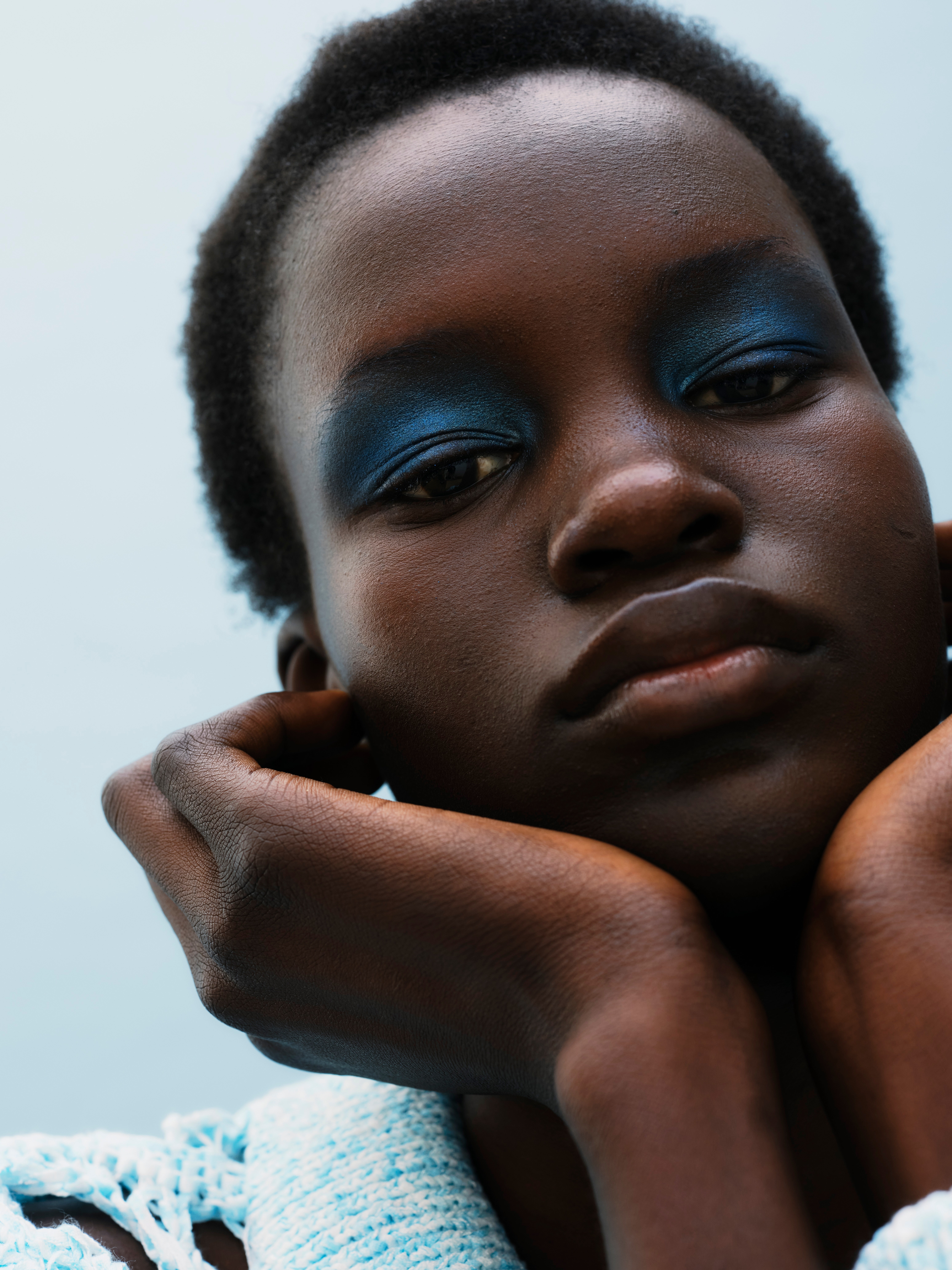During a recent trip to my local Sephora to find a new foundation, I faced the same old problem: as I moved through the range of skin tones, the options became fewer and fewer toward the deeper end. My skin is more of a chestnut or toasted brown shade, and for years, I’ve had to mix multiple shades to make one work.
I can’t count how many complexion products I’ve skipped simply because they didn’t have a shade that matched me—and I know the issue is even worse for those with darker skin than mine. It’s a common struggle for people of color, as I’ve heard from friends and peers, and as social media, especially TikTok, has highlighted. The platform has become a direct line between brands and consumers, though lately, it feels like that attention stops at a certain skin tone.
“I started creating beauty content because I couldn’t find myself represented in the beauty space,” says Golloria George, a popular TikTok creator with 3.2 million followers. As a dark-skinned South Sudanese woman, her frustration with brands that either didn’t offer deep enough shades or excluded them entirely inspired her to speak up. “Shade inclusivity wasn’t a planned mission—it was my reality. Calling it out was just a natural response to constantly being overlooked.”
Makeup artist Danessa Myricks notes that consumer feedback really gained momentum after the 2020 Black Lives Matter movement. During a year marked by nationwide protests following George Floyd’s death, many brands felt pressured to prove their commitment to inclusivity—through campaigns, social media posts, and product launches. Rihanna’s Fenty Beauty, which debuted in 2017 with an unprecedented 40-shade foundation range, set a new standard. “I didn’t want women to say, ‘That’s cute, but it only works for her,’” Rihanna said at her brand’s launch. “I wanted products that women of all skin tones could love.”
At first, brands responded—but now, that energy seems to have faded. “Some brands may have felt forced into it, but it wasn’t truly authentic to who they were,” Myricks explains. As the initial urgency of racial justice conversations cooled, many returned to old habits. “Now, we’re seeing their real intentions—and people are reacting to that.”
As a Black woman who reviews and consults on beauty products, I’ve learned to spot which brands genuinely cater to diverse skin tones—not just with token “universal” shades. It’s not about the sheer number of shades, Myricks points out, but thoughtful consideration. “Not every brand can launch 40 or 50 shades due to budgets, but you can still show balance—from fair to deep, with attention to undertones and depth.”
True inclusivity isn’t just about ticking boxes—it’s about understanding the nuances of skin tone and making sure no one is left out.George explains the importance of true inclusivity in beauty products: “It’s not just about adding a few darker shades at the end. Real inclusivity means considering who’s at the center during formulation, testing, and marketing—making everyone feel considered from the start.” While brands might limit shade ranges due to time, budget, or perceived demand, cosmetic chemist Javon Ford clarifies that creating balanced shades isn’t inherently more expensive. The real cost comes with producing an extensive range (like 50 shades). Instead, brands could focus on 10 well-balanced, buildable shades that cover fair to deep skin tones.
Ford explains the basics of foundation formulation: “We use the same core pigments—red, yellow, black iron oxides, and white titanium oxide—for all color cosmetics. These four can create most skin tones, though larger companies might use additional pigments like green or blue for more nuanced undertones.” The key, he notes, is whether brands truly care about diversity in their shade development. “It’s crucial to have diverse teams working on formulations because colors appear differently on various skin tones.”
So why do some brands still skew lighter with their ranges? Makeup artist Myricks points to revenue concerns: “Many brands focus on medium and yellow-toned shades because they see more sales potential there.” But this thinking is flawed—Black consumers spent $9.4 billion on beauty in 2023, and excluding deeper shades means missing out on this market entirely.
Beauty creator Toni Bravo distinguishes between brands that perform inclusivity and those that truly commit to it. With nearly 900K followers, Bravo helps people find shades that actually work for their skin tones. Her collaboration with Rhode on new Pocket Blush shades (Date Cake and Plum) came after criticism of the initial range’s limitations for deeper skin. “Rhode actually listens,” Bravo says. “They’re unusually hands-on for a celebrity brand, truly passionate about making change.” She notes their organic partnership developed over months of product testing and content creation before the official consultation.We gave honest feedback about how we felt, and I always felt heard in every note I shared. As a result, we created some of my new favorite blushes—it was a dream come true.
While Hailey Bieber and Rhode chose not to comment, their collaboration with Bravo and George despite customer criticism reflects Myricks’ key message: it shows intention.
Myrick’s brand also sets a high standard for inclusivity, making sure every skin tone and type is represented in each product launch. Her line excels in color—from the perfectly matched Yummy Skin Blurring Balm Powder to the versatile Colorfix pigments, there’s truly something for everyone.
“Danessa is a shining example of inclusivity, positivity, and light in the beauty industry,” Bravo says. “With DMB, inclusivity is never questioned.” This same commitment is seen in brands like Ami Cole, Pat McGrath Labs, LYS Beauty, and Fenty Beauty, which continue to celebrate people worldwide, ensuring no one feels unseen.
Only time will tell how shade inclusivity evolves by 2025 and beyond. “Pressure is turning into purpose, and that gives me hope,” George says. For brands finding their place in this conversation, Myricks’ advice is key: “As you build something, you know who you’re building it for.”


